2003 World Cup winning Australian team and where are they now
View : 5.3K
11 Min Read
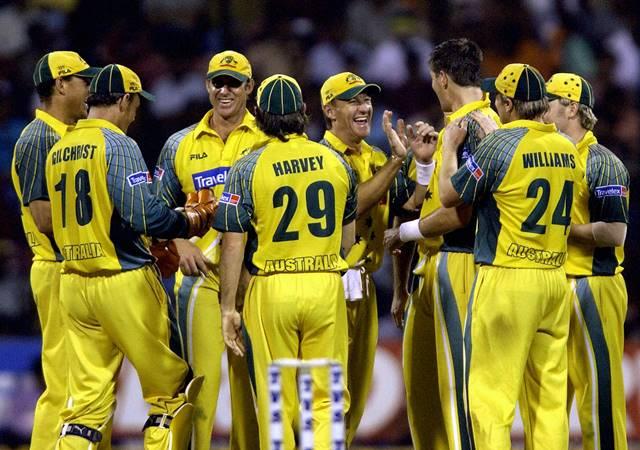

BANGALORE, INDIA: Australian cricketers celebrate during a day-night match of the triangular one-day cricket series against India at the Chinnaswamy Stadium in Bangalore, 12 November 2003. Australia defeated India by 61 runs. AFP PHOTO/Indranil MUKHERJEE (Photo credit should read INDRANIL MUKHERJEE/AFP/Getty Images)
Australia possessed the dream team, the team that was called the ‘Invincibles’ back at the time of 2003 World Cup, and coming into the competition, they were the most serious contenders for the title and they were there to defend their title. Having won 5 World Cups, most by any cricket playing nation, the Australian team ruled the cricketing arena for a decade starting from 1998-99, winning three World Cups in that stretch of time, i.e. in 1999, 2003 and 2007.
And among these 3 triumphs, the team of Invincibles was at their absolute prime in their career, playing the dream cricket coming together as a team, and this made the team of 2003 World Cup different from any other. In the decade when Australia reigned international cricket, they went on to win 21 consecutive matches in the World Cups.
In winning the three consecutive World Cups, Australia had respectively defeated 3 Asian giants in the process, Pakistan, India and Sri Lanka. At that time, they just did not win matches, they bulldozed over their opponents. Since then, 13 long years have gone by, with almost all the baggy greens from that squad going into retirement. Let’s take a look at the Australian squad from the World Cup 2003:
1. Adam Gilchrist:
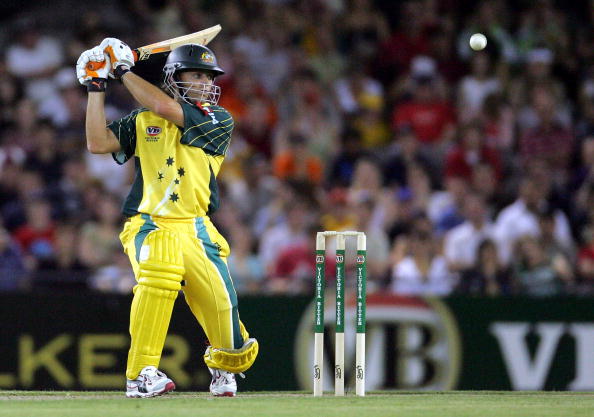
Adam Gilchrist was an integral part of the Australian team in 2003, scoring 408 runs in the tournament at an average of 40.80 and strike rate of 105. In the final against India, he scores a 48-ball 57 in a century partnership with Matthew Hayden, to drop a hint of the onslaught that was to come.
But his most memorable moment in the World Cup was his ‘Walk’ in the semi-finals against Sri Lanka when he returned to the pavilion despite being declared not out by the umpire, which still exemplified as a show of sportsmanship. He continued with the Australian team after the World Cup going on to win the Man of the Match in the 2007 World Cup finals against Sri Lanka, after he scored a 143 off 104 balls, eclipsing his captain Ricky Ponting’s record of highest score in a World Cup final by 3 runs.
Gilly retired from international cricket in 2008 after the India series but continued playing in the IPL and some other leagues. He was recently named the Australian ambassador to strengthen educational ties with India.
2. Matthew Hayden:

Combining with Adam Gilchrist, Hayden or popularly known as ‘Haydos’ formed one of the most successful and feared opening pair and they displayed that in the World Cup. Hayden finished the tourney with an aggregate of 328 runs, the third highest scorer for Australia.
He continued playing for Australia after the World Cup, finally announcing his retirement in 2008. He continued playing Tests, where he decided to retire after the match against South Africa in 2009. In the IPL, he continued with the Chennai Super Kings, being an integral part of Dhoni’s side till 2010. He retired from all forms of cricket in 2012. He has a tie-up with Star Sports and was recently heard commentating in ICC World Cup T20 2016 held in India.
3. Ricky Ponting:
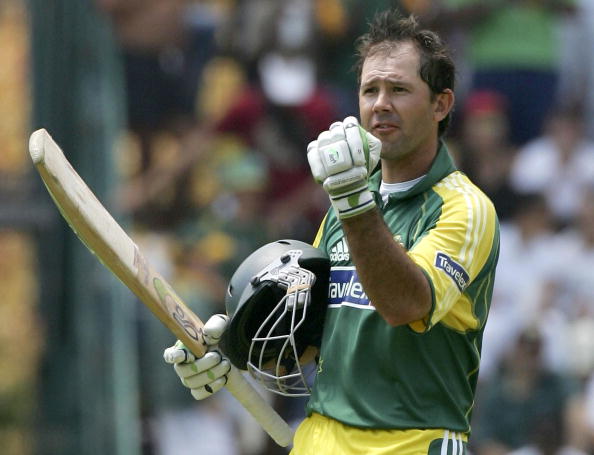
The Australian captain had a fantabulous World Cup in 2003, where he went on to pile a massive 415 runs in the tournament at an average of 51.87, finishing as the top-scorer for his team. Leading by example, he top-scored in the finals against India, scoring 140 runs after the opening pair had laid the foundation for a massive innings.
Ponting led the Australian team to another World Cup triumph in 2007. His form took a dip after that with his problems coming to the fore and he finally announced his retirement in 2012. He was named the captain of Mumbai Indians in 2013 season, but was unable to perform much and later he was handed over the responsibility of being the head coach of the same franchise.
4. Damien Martyn:
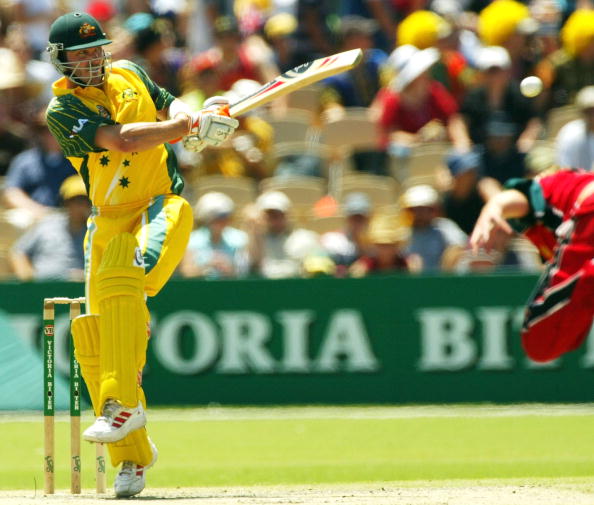
A superb fielder of his time, Damien Martyn had a massive World Cup finishing with an aggregate of 323 runs at an average of 64.60, scoring a century in the finals alongside Ricky Ponting. He finished the cup as the 10th highest run-scorer in the tournament.
After the World Cup, he had a loss of form in 2006 and he finally decided to retire in December 2006, and commenting on his decision, he said, “I would like to advise of my retirement from cricket, effective from today. I do so with a deep awareness of the opportunities that the game and Cricket Australia have provided for me.” He later signed up for Indian Cricket League in 2007, and came back again in 2008 and in 2008, he was signed by Rajasthan Royals for a spot in the team. Post-retirement he also tried his entrepreneurial skills, co-founding Criczilla, which he claimed to be ‘The world’s first Cricket Social Network’.
5. Darren Lehmann:
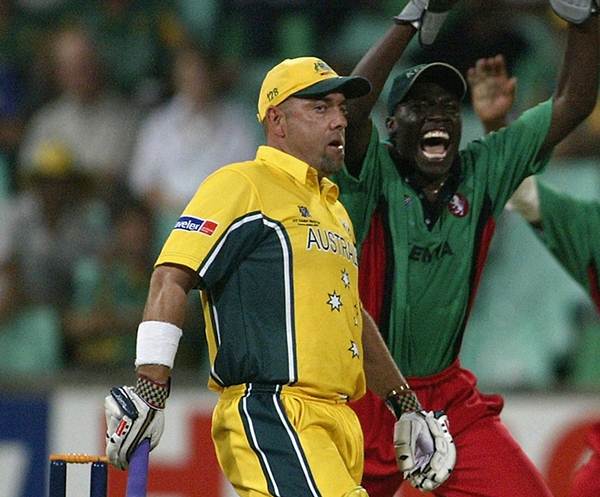
The oldest member of the Australian World Cup winning squad in 2003 at 33 years and 28 days, he was an excellent middle-order batsman. A sheath-anchor for the team, he missed the first half of the tournament but took the winning catch in the final.
He had a struggling career, and the struggle continued after the Cup too. He finally decided to retire in 2005. After a few coaching roles here and there, he was given the coaching duty of Adam Gilchrist-led Deccan Chargers. Later, in 2013, he was appointed as the head coach of Australian national team and won the World Cup in 2015 and is still at the helm.
6. Michael Bevan:
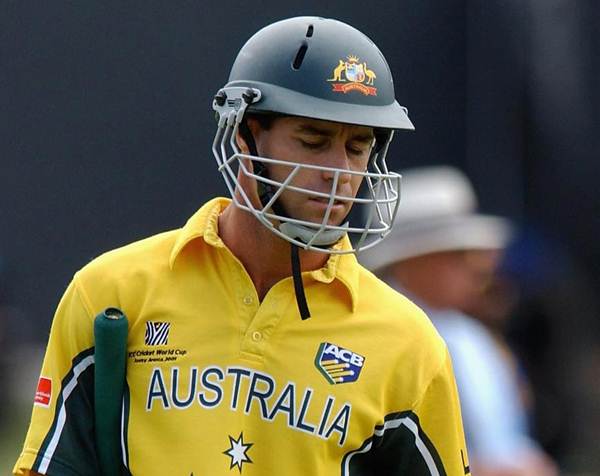
Known as one the best ‘finishers’ in the cricketing world, Bevan had an excellent World Cup, contributing with his bat as well as his chinaman bowling which proved to be helpful time and again for his team. Having entered the tournament injured, he later played 2 key knocks partnering Andy Bichel against New Zealand and England to win two important matches for his team.
Having last played an ODI in 2004, he finally announced his retirement from all forms of cricket in 2007 due to injuries. Bevan signed off saying, “It got to the stage where injuries and pain were holding back my motivation, and it got to the stage where I was finding it hard to get up for matches and that was probably a pretty clear indication that it was time to move on.” He later coached various teams, including Odisha in Indian domestic circle, Chennai Superstars in ICL, Chennai Super Kings and Kings XI Punjab in IPL.
7. Andrew Symonds:
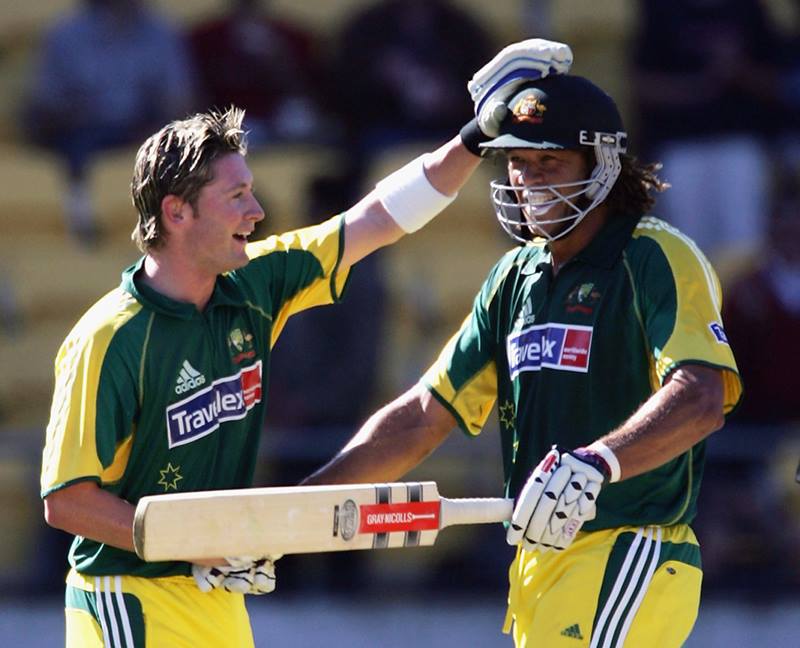
Another explosive batsman, Symonds was a key player in the World Cup success with a ridiculous average of 163.00 as he finished the tourney with an aggregate of 326 runs. Struggling to get into the squad, he cemented his place in the team with a strong display in the World Cup.
After the World Cup, he made his Test debut in 2004 and also went on to win the 2007 World Cup with Australia. Post-2008, his life was mired in controversies as he was frequently banished from the team due to disciplinary causes and alcoholism. After serving through a rough ride, he retired in 2012 to resurrect his family life. He made a wildcard appearance in Indian show Big Boss and also starred in a Bollywood movie called Patiala House, co-starred by Akshay Kumar. He was appointed the head coach of Queensland U-19 side in 2015, but apart from that, not much of his life after retirement has been in news.
8. Brad Hogg:
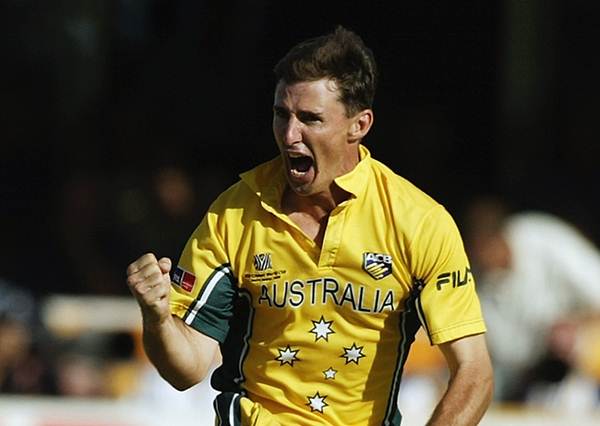
Evergreen, age-defying Australian cricketer Brad Hogg came into the World Cup squad as a replacement for Shane Warne was banished from international cricket due to drug abuse. He had a successful campaign with the team, going on to emerge as champions.
Hogg announced his retirement in 2008, but with his return in the 2011 Big Bash League, he was recalled to the T20 squads in 2012 and 2014 World Cups, making a name for himself as a cult hero. He still continues to have international T20 contracts and continues to play in the IPL, Big Bash League, Ram Slam T20 Challenge, BPL and SLPL. At 45 years of age, he is proving that ‘age is just a number’.
9. Andy Bichel:
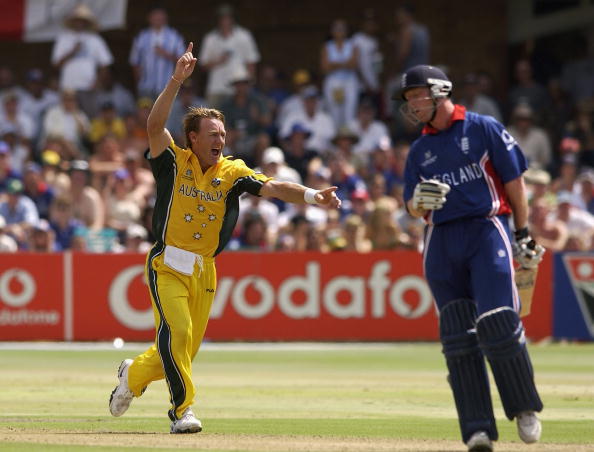
Brought into the squad as a backup for pace trio of Glenn McGrath, Jason Gillespie and Brett Lee, Andy Bichel got his opportunity when injury ended Gillespie’s World Cup. He made most of the opportunity, finishing the tournament as one of the most economical bowlers and also contributed with the bat combining with Bevan to win 2 important matches for his team.
Post World Cup, he was exiled from the team in 2004-05 but he continued his good performances in the domestic circuit, calling for numerous ‘Bring back Bichel’ campaigns by the Australian fans. He later served the Chennai Super Kings in IPL as a bowling coach from 2011 till last year and has also coached the Papua New Guinea.
10. Brett Lee:

One of the best pacers to have graced the game over the years, Brett Lee was also one of the most feared pacers of his time, clocking 100mph on the speedometer multiple times in his career. Lee finished the World Cup as the second-highest wicket taker, ahead of his teammate Glenn McGrath, finishing with 22 wickets at an average of 17.90. His performance played a significant role in Australia’s win.
In a career largely mired by injuries, he was in and out of the squad mainly due to his injuries. Lee had to return home after an injury cut short his 2007 World Cup, and he later returned to the team in the ODI series in England in 2009. He played the 2011 World Cup in India and retired from international cricket in 2012 but continued playing in IPL before announcing retirement from all forms of the game in January 2015. At the moment the pacer is enjoying his stint as a commentator and presenter on occasions.
11. Glenn McGrath:
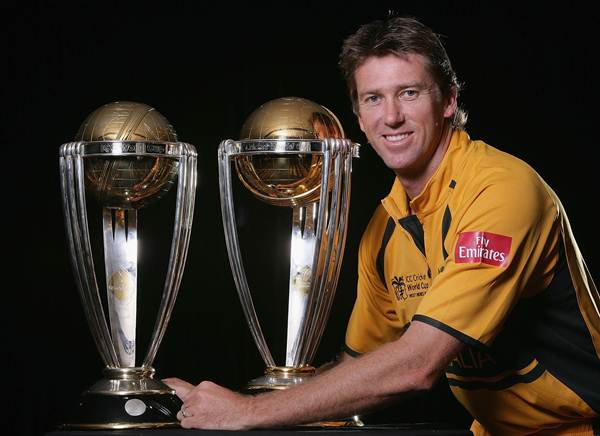
Glenn McGrath, remembered as one of the best fast bowlers to have played the game, was another prime contributor in Australia’s World Cup triumph. He was known for his accuracy and stamina all through his career and in the World Cup, it was the same story where he finished with 21 wickets at an average of 14.73. He was the second highest wicket-taker for Australia in the Cup.
After the 2003 World Cup triumph, he went on win the 2007 World Cup too, finishing with 26 wickets and was adjudged Player of the Tournament and also became leading wicket-taker in World Cups. After the 2007 World Cup, he retired from international cricket.
In the inaugural IPL, he was signed by Delhi Daredevils and was the most economic bowler. He later moved on to coaching the team. After his retirement, he has channeled his energy in his humanitarian works with the McGrath Foundation, a breast cancer support and education charity founded with his wife. He is also the director of MRF pace foundation, in India where he replaced pace legend Dennis Lillee after he had served for 25 years.
12. Nathan Bracken:
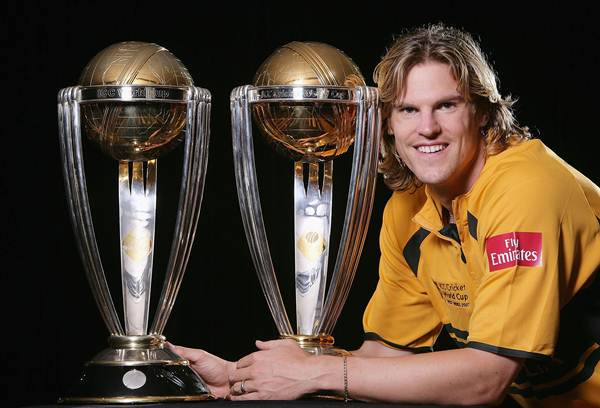
Called in to replace injured Jason Gillespie, Nathan Bracken did not have much field time during the course of the World Cup, mostly kept as a benchwarmer, as Andy Bichel flourished in the chances he got.
A promising young pacer, Bracken’s cricketing career was cut short due to an unfortunate knee injury, forcing him to play his last game in 2009. He later retired in 2011. Post-retirement, he filed a $2.5m lawsuit against Cricket Australia, alleging their incompetency to manage his knee injury that ended his cricketing career.
13. Ian Harvey:

The Wisden Cricketers of the Year in 2004, Ian Harvey did not have much of a role to play in the World Cup, featuring in only six league games after which he was replaced as Darren Lehmann and Michael Bevan returned from injury. In the game against Pakistan, he picked up 4 wickets defending a score of 310. He finished with 66 runs in 6 games and 8 wickets at an average of 22.00 and 19.62 respectively.
Later, he played his last international match in 2004 against Zimbabwe. He had played in English County cricket with Gloucestershire from 1999 to 2003 and in 2004, he switched sides to play for Yorkshire and later in 2006, he returned for Gloucestershire again. He was signed by Chennai Superstars in the inaugural ICL season and was the Man of the Match in the final and also the Man of the Tournament. He was appointed the assistant coach to Richard Dawson at Gloucestershire in the 2015 County season.
Download Our App